
Bedouin, derived from the Arabic badawī, a generic name for a desert-dweller, is a term generally applied to Arab nomadic pastoralist groups.
These rare photos from the end of the 19th century capture a range of Bedouins at a time of change.
As modern governments projected their power into previously ungovernable tracts of the desert, many Bedouins chose or were forced to abandon a purely nomadic lifestyle and transitioned to a semi-nomadic or sedentary urban way of life.
The Bedouin people (“desert dwellers” in Arabic) are animal herders who migrate into the desert during the rainy winter season and move back toward the cultivated land in the dry summer months.

A Bedouin young woman.
Bedouin tribes have traditionally been classified according to the animal species that are the basis of their livelihood.
Camel nomads occupy huge territories and are organized into large tribes in the Sahara, Syrian, and Arabian deserts.
Bedouin society is tribal and patriarchal, typically composed of extended families that are patrilineal, endogamous, and polygynous.
The head of the family, as well as of each successively larger social unit making up the tribal structure, is called sheikh; the sheikh is assisted by an informal tribal council of male elders.

A woman weaves fabric as her family looks on.
In the second half of the 20th century, Bedouins faced new pressures to abandon nomadism.
Middle Eastern governments nationalized Bedouin rangelands, imposing new limits on Bedouins’ movements and grazing, and many also implemented settlement programs that compelled Bedouin communities to adopt sedentary or semisedentary lifestyles.
Some other Bedouin groups settled voluntarily in response to changing political and economic conditions.
Advancing technology also left its mark as many of the remaining nomadic groups exchanged their traditional modes of animal transportation for motor vehicles.
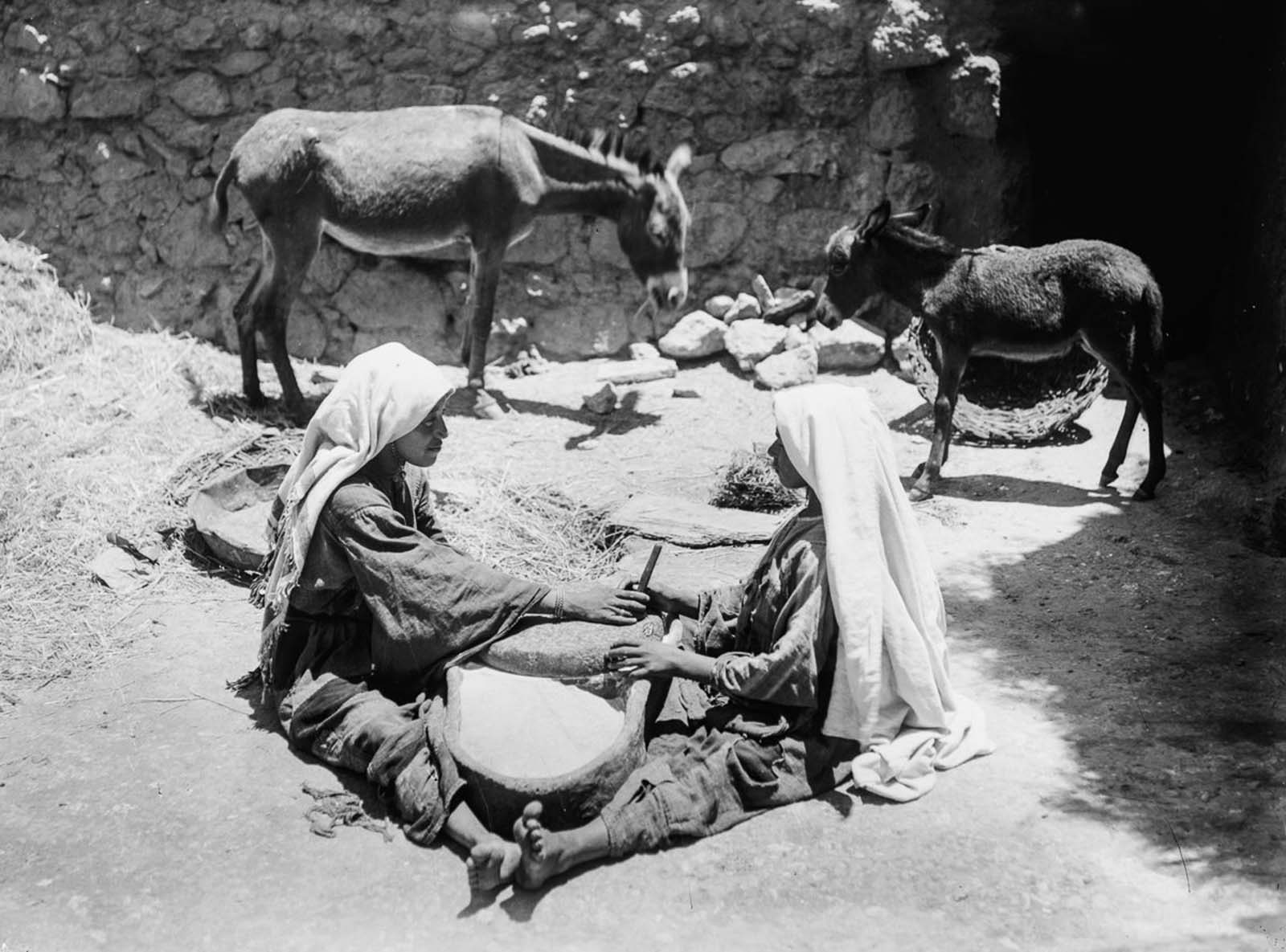
Two women work at a millstone.

An elderly Bedouin man.

The Bedouins were traditionally divided into related tribes.

Men perform a sword dance at a wedding.

A Bedouin man poses on horseback.

Mounted warriors.

The traditional Bedouin “dress” is a thobe (also spelled thawb which is the standard Arabic word for a “garment”).

Men with trained falcons used for hunting.

Men play a leapfrog-like game during wedding celebrations.

Bedouin men smoking.

Women carry bundles of papyrus.
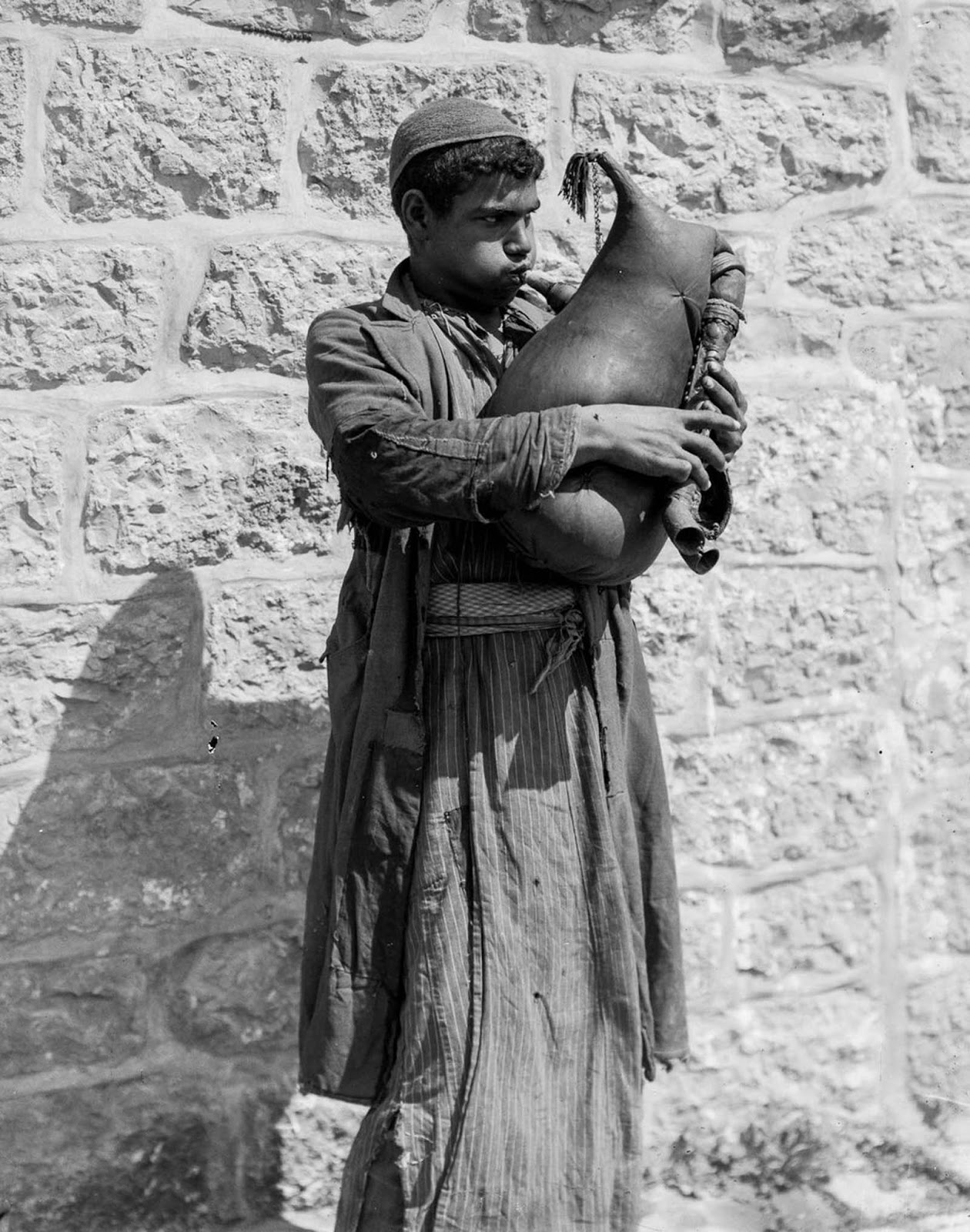
A young man plays an instrument.
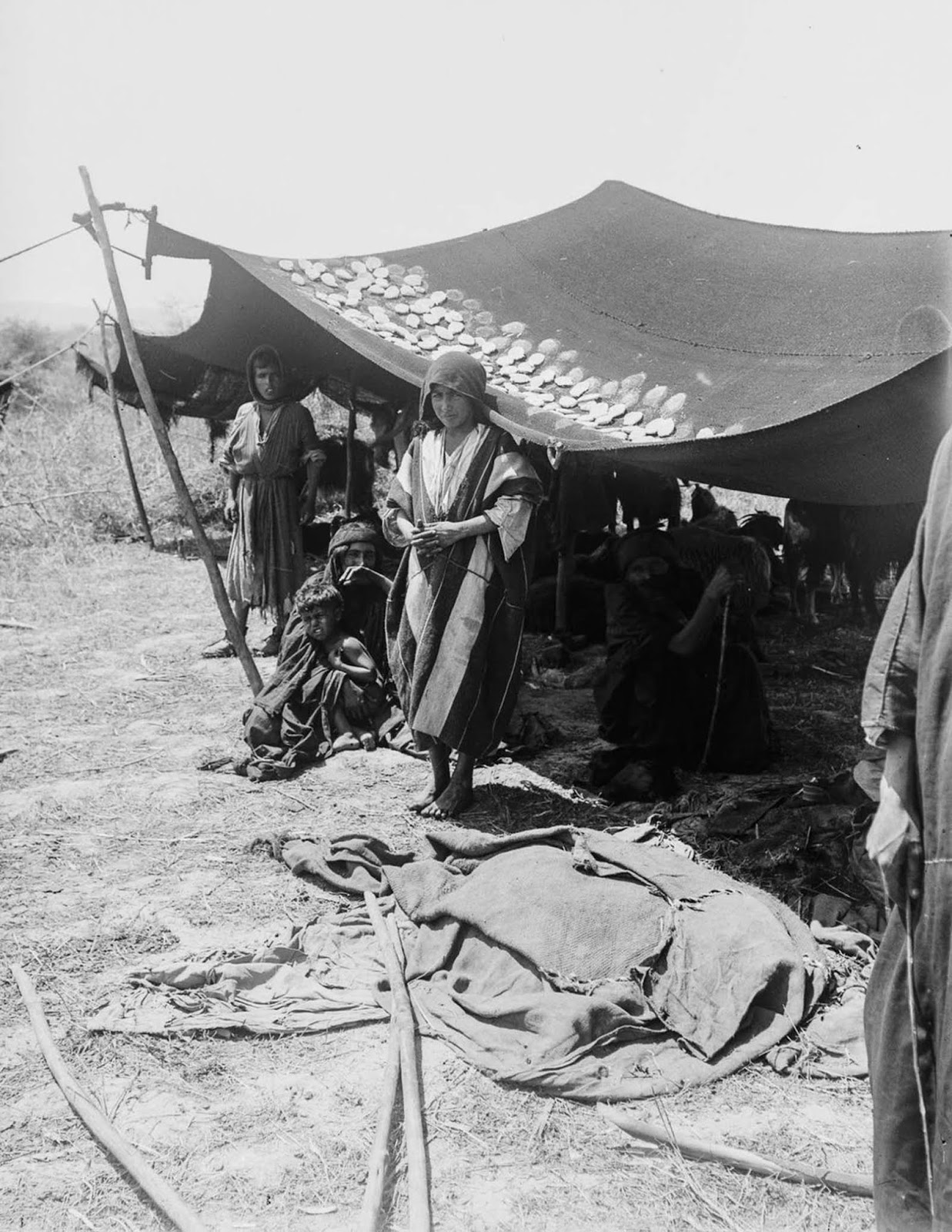
A family dries cheeses on the roof of their tent.

A Bedouin woman and her child.

A major source of income for these people was the taxation of caravans, and tributes collected from non-Bedouin settlements.
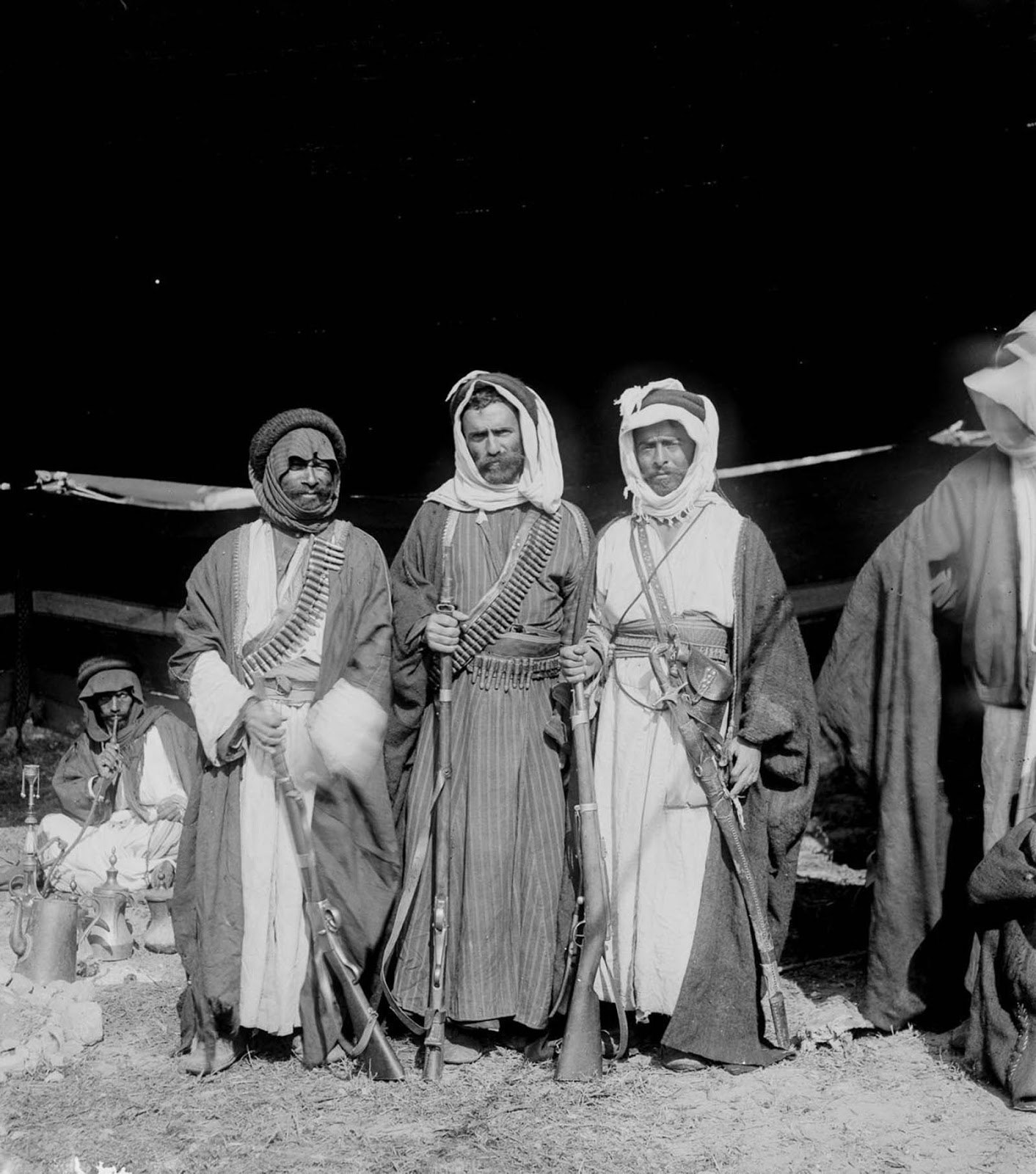
Armed Bedouin men.

Men participate in a shooting competition.
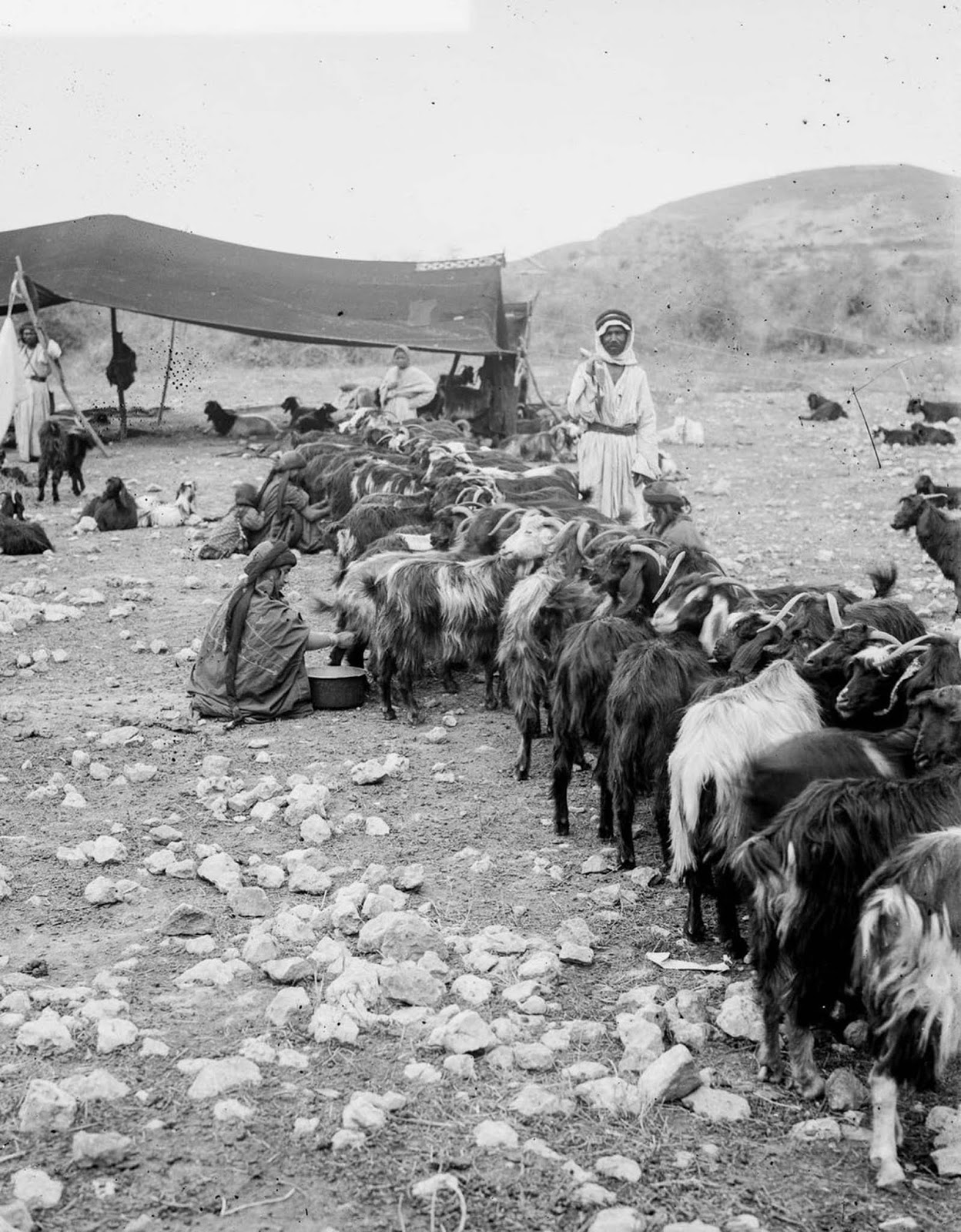
Women milk their herd of goats.

Men dance during wedding celebrations.
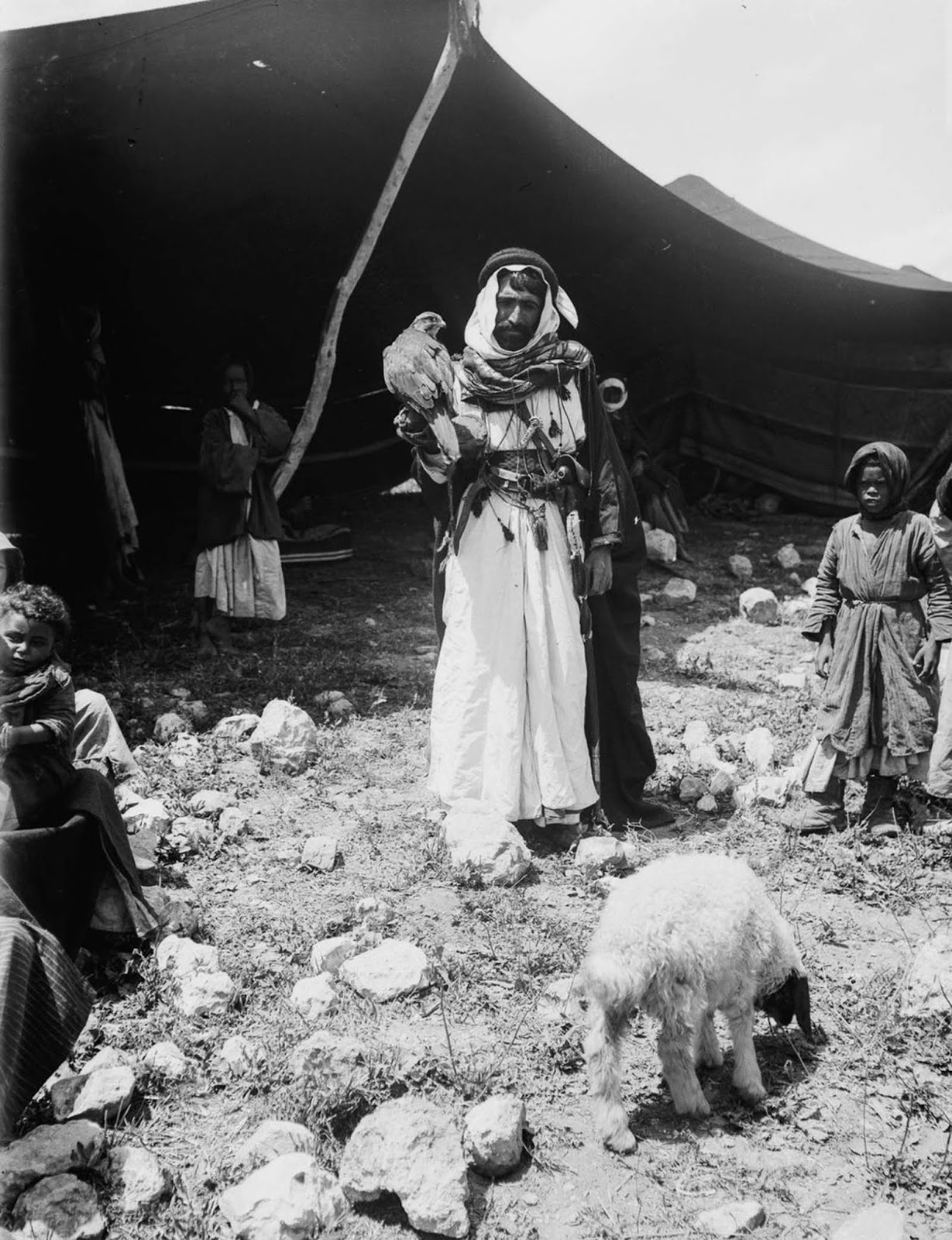
A man with a hunting falcon.

An elderly Bedouin man.

Bedouin sweethearts.

A Bedouin young man.

Bedouin kids.

Songs are based on poetry and are sung either unaccompanied, or to the stringed instrument, the rebab. Traditional instruments are the rebab and various woodwinds.

Bedouins at the Tomb of Lazarus near Jerusalem.

Arab Christian Bedouin woman from the settled town of Kerak, Jordan, who probably was the wife of a sheikh. Braids were predominantly worn by Arab Christian Bedouin women of the tribes of Jordan.

A Bedouin couple.

Bedouins rest near the pyramids of Giza.

A Bedouin man showing his sword.

A Bedouin man riding his horse.

An elderly Bedouin and his camel.
(Photo credit: Library of Congress / Britannica).
Updated on: November 3, 2024
Any factual error or typo? Let us know.



